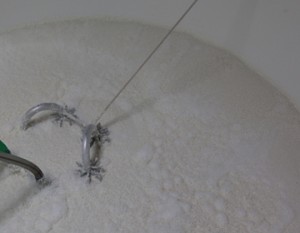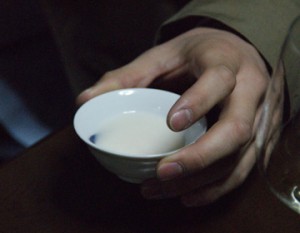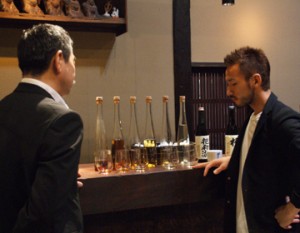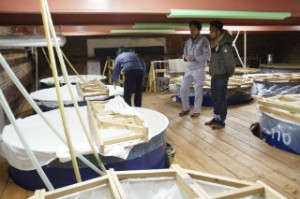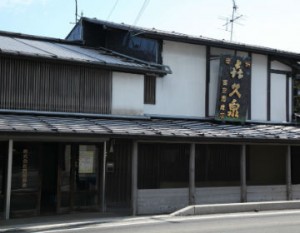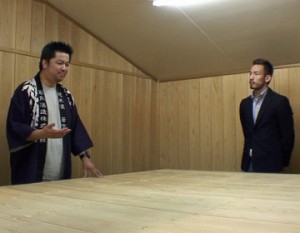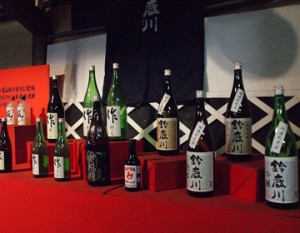The main ingredients of sake are rice and water. It is not difficult to imagine that differences in the climate and soil of a region can affect the taste of rice and thus sake, but what kind of sake would be produced if even the differences in soil, such as clay or sand, were directly reflected? We visited the Matsuse Sake Brewery, which focuses on the unique characteristics of rice depending on the fields in which it is grown and aims to “make sake that is unique to the region.
A long-established sake brewery founded at the end of the Edo period
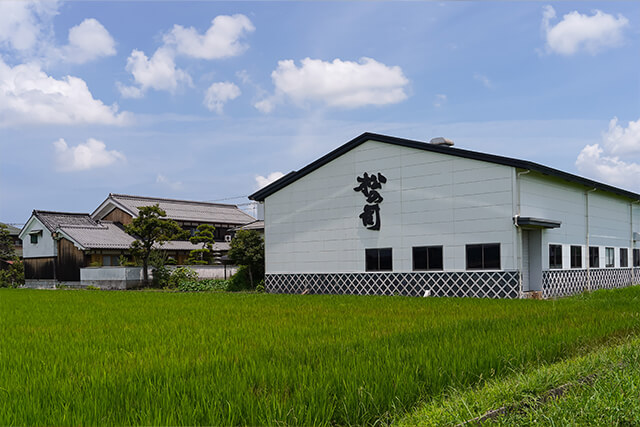
The town of Ryuoh, where the Matsuse Sake Brewery is located, lies between Lake Biwa and the Suzuka Mountains to the east. Surrounded by mountains on all sides, Shiga Prefecture is actually a hidden rice-producing region, and has long been a sake brewery, with more than 30 breweries scattered throughout the prefecture.
The history of the Matsuse Sake Brewery dates back to the Edo period (1603-1868), when it was involved in the sake brewing business from the mid-1600s, but temporarily closed down due to the turmoil at the end of the Edo period. Since then, the company has continued to brew sake that makes the most of nature’s bounty, using carefully selected sake rice andbrewing water pumped up from 120 meters underground.
In recent years, the brewery has won gold medals at the National New Sake Competition for three consecutive years and was selected as the sake for JAL’s international business class flights, and has become a well-known sake brewery in Japan and abroad.
Matsu no Tsukasa, a famous sake representing Shiga Prefecture
Matsunoshi ” is the only brand of sake brewed at Matsuse Shuzo. The brewery produces more than a dozen varieties of sake, varying the rice used, the degree of rice polishing, the amount of water, and the yeast. The name “Matsu no Tsukasa” is a combination of a 200-year-old male pine tree that once stood on the property and “Matsuse,” the founder’s family name. The word “Tsukasa” means “most gallant figure,” and the name expresses the company’s wish that its sake will be like this majestic pine tree. The sake brewed with soft, fluffy water from the Suzuka Mountains and 100% contract-grown sake rice has a freshness and dignity that has made it extremely popular in the Kansai region, especially in Shiga Prefecture.
I want to grow Yamadanishiki produced in Ryuoh.
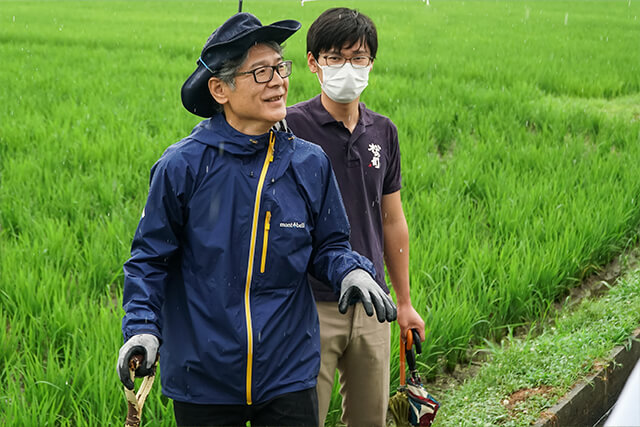
The distinctive feature of the Matsuse Sake Brewery is its commitment to rice. Hearing that the secret lies in the soil, we asked Tadayuki Matsuse, the sixth-generation owner of the brewery, to show us the rice fields in his hometown of Ryuoh, where the sake rice is grown.
Until about 40 years ago, we used to make sake using Nipponharu rice, but we realized that we could not continue to do so if we wanted to make sake that would continue to be drunk in the future, so we began to use Yamada Nishiki, which at that time was called the “king of sake rice. Yamada-Nishiki, the “king of sake rice” at that time. Yamada-Nishiki was popular and hard to find, so we asked farmers to grow it in our hometown of Ryuoh to see if we could harvest it, and that’s how it all started.
Yamada-Nishiki is mainly grown in Hyogo Prefecture. Yamada-Nishiki is tall and easily falls over and is susceptible to disease and pests, so its cultivation in other areas had not progressed well. Even when they did start growing it, the climate, water, and soil were different. Even if the same growing methods were used, the rice would not be the same as in Hyogo. There were years when the rice ears fell over due to wind and did not produce well, and he realized that it was not a simple matter.
Different soil makes sake taste different.
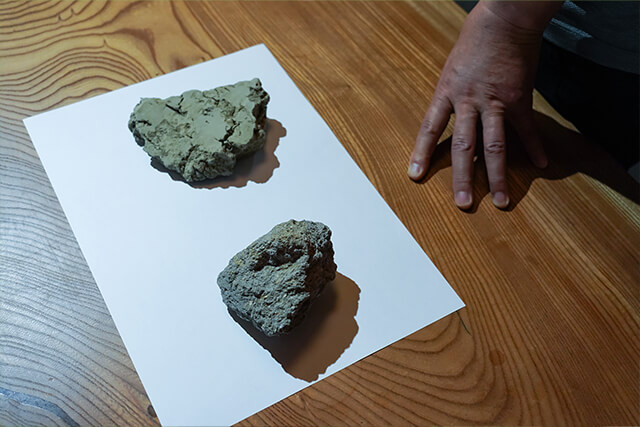
Even so, through repeated trial and error with local farmers, they realized that even within the same town of Ryuoh, the Yamada Nishiki produced in different rice paddies differed. Rice grown in clay fields that are well watered and fertilized produces a fuller, heavier rice, while rice grown in gravel fields that are well drained produces a firmer, more delicate rice. When sake is brewed using the same brewing method, the full rice produces a dense, voluminous sake, while the delicate rice produces a pleasantly light sake with a floral aroma.
We wanted to somehow increase the amount of Yamada-Nishiki, so we planted it throughout Ryuoh Town, which led to interesting results. Just by having different soils, the taste of sake can change so much. I think it was also good to realize that the taste is different from that of Hyogo Prefecture and unique to this area. It was then that I began to think that it is our job to pay attention to the individuality of the land and convey its value.
Matsuse Sake Brewery currently brews sake in separate tanks for each soil type and sells it under different labels.
Azolla,” a symbol of clean rice paddies
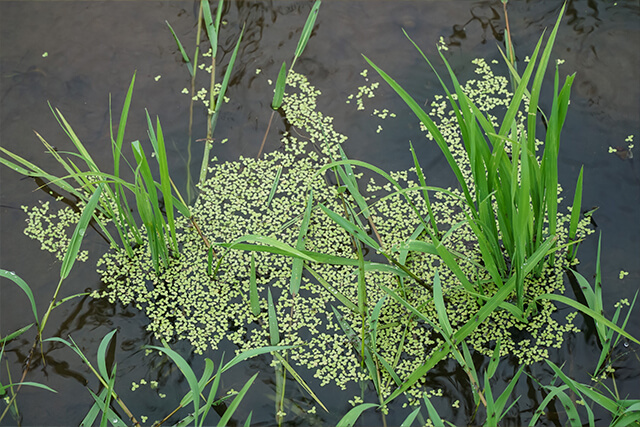
Around 2000, the company began to engage in pesticide-free cultivation. Shiga Prefecture, where most of the rivers in the prefecture flow into Lake Biwa, has a high level of environmental awareness among its residents, and for six consecutive years has boasted the largest area devoted to environmentally friendly agriculture in Japan. Mr. Matsuse himself has a strong desire to protect Lake Biwa, and at the same time, he wanted to express the goodness of the rice paddies as they are, without any extra work, in his sake.
He also wanted to express in his sake the quality of the rice paddies as they are, with no extra work done to them. The azolla blocks light into the water, making it difficult for new weeds to grow.
Sake made with pesticide-free rice has a different power. It has a clear, clean minerality in the aroma. Perhaps it is the awareness that the sake is made from rice grown in clean rice paddies, but above all, I feel that it is sake that should be drunk. Just like rice cultivation, sake cultivation is also an agricultural activity,” smiles Mr. Matsuse.
Sake brewing that makes the most of the rice’s unique characteristics
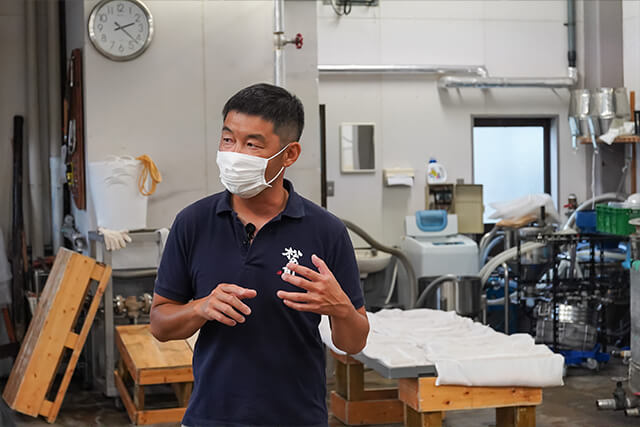
The man in charge of sake brewing at Matsuse Brewery is Keizo Ishida, who has served as toji, the chief brewer of sake, for the past 10 years.
When I joined the brewery in 2001, the Yamada-Nishiki variety itself had great value, and the best was from Hyogo Prefecture. Then, how about the Yamada-Nishiki from Ryuoh? That was the extent of my understanding of the Yamada-Nishiki of Ryuoh Town. However, as we brewed and compared each farmer, we began to realize that the taste of sake made from sandy soil is different from that of sake made from clay soil. It was a minute difference, but there was an absolute difference that did not change no matter how many times we did it,” he said.
The taste of sake is largely determined by human hands, such as the degree of rice polishing and the brewing process, and Mr. Ishida felt uncomfortable with the idea of changing the taste of sake one after another to suit personal tastes and trends, and then being told, “This is our local sake. He brews rice grown in a natural environment as neutrally as possible. He says he wants the resulting sake to show the differences in the soil, climate, and environment.
The history of the brewery creates the taste of the sake.
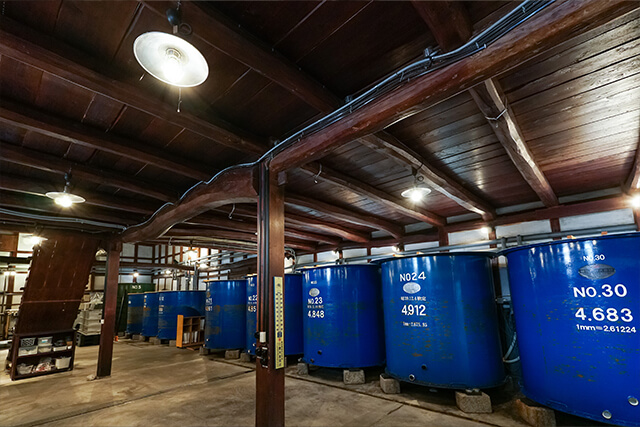
Matsuse’s brewery is neither air-conditioned nor equipped with state-of-the-art equipment. The walls and ceilings are coated with persimmon tannin for preservation and protection against insects, and the building is carefully cared for and used. Mr. Ishida calls these warehouses ” antiques ” because of the beautiful luster and candy-colored tints they have acquired. Generally, antiques are objects to be held in one’s hands, such as vessels and furniture, to be enjoyed with the eyes and cherished. It is a rare happiness to be able to work in the midst of antiques and be surrounded by them. The history of the brewery and the wisdom and thoughts of its predecessors may also be important factors in determining the taste of sake.
Returning to the starting point and simplifying
Mr. Ishida says that the best sake is made at this brewery using local rice and water. He wants to keep the sake as neutral as possible so that the character of the land can be expressed. With this in mind, he started the ” kimoto” brewing method, which was mainly practiced in the Edo period (1603-1868) to encourage fermentation by the power of nature.
I believe that if you only aim for recognition in the sake competition, you will only be able to think in an industrial way. I believe that is not good. In my current process, I don’t add yeast or lactic acid, and I don’t do much analysis such as measuring acidity. Even so, it is still possible to make sake. Sake brewing was originally done with pesticide-free rice, using the “ikuhashi-zukuri” method. If we can go back to the techniques and thoughts of the people who faced this process, I believe we can express craft in the true sense of the word.
What kind of sake is Mr. Ishida aiming for? He replied, “It should have a familiar texture. It should be a sake with a familiar taste, one that you can naturally feel when you drink it and think, ‘That’s the usual taste.
Blue” series brewed by soil
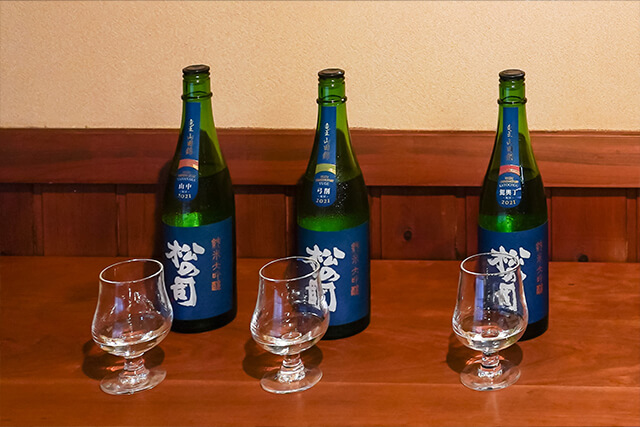
The “Blue” series is made from Yamada-Nishiki produced in Ryuoh, and brewed according to different soils. This junmai daiginjo has the flavor and richness typical of rice, and when compared, it is easy to see how the expression of the rice changes depending on the soil in the rice paddies where the rice was grown. If you look at the brand page “Origins of Blue” and learn about the differences in soil and the scenery seen from the rice paddies before drinking, you will feel as if you can even feel the wind blowing in the area and the sound of swaying ears of rice.
The brewery selects a few regions each year, so you can enjoy the combination of each year’s wines and compare them with each other.
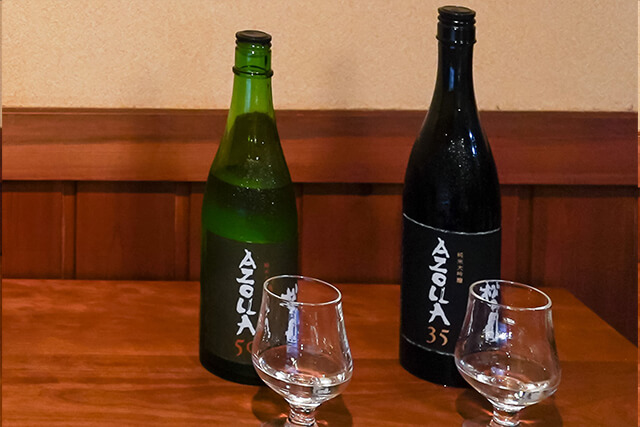
AZOLLA” expresses nature
AZOLLA” is an evolution of the “Blue” series and symbolizes Matsunoshi ‘s commitment to rice.
It is made from Yamada-Nishiki grown locally in Ryuoh, without any pesticides or chemical fertilizers during the growing period. The name “Azolla” was chosen to symbolize the pesticide-free nature of the brewery.
The clear, gentle, yet dense flavor is considered ” one of the ideal forms ” of Matsu no Tsukasa.
Grateful for the land, we create a taste that can only be found here.
Matsuse says that he is still searching for what makes Ryuoh unique. I want to use pesticide-free rice grown in Ryuoh to make sake that people around the world will say tastes great. I am happy to continue to do so,” he says, his face calmly and happily gazing into a future he has yet to see.



